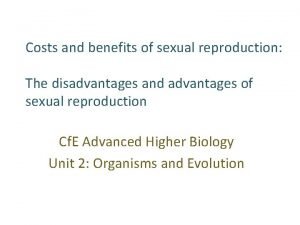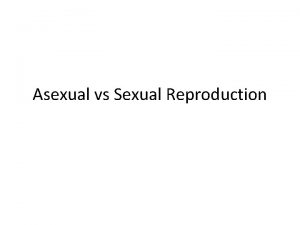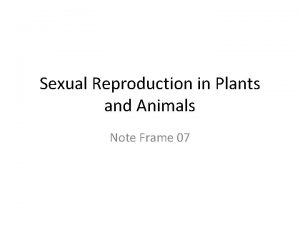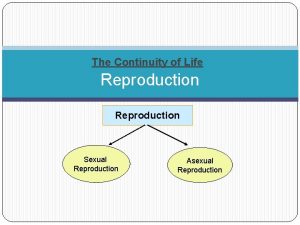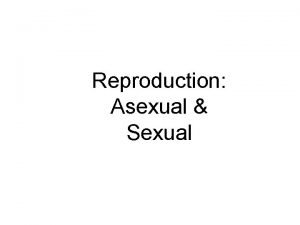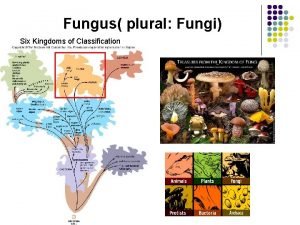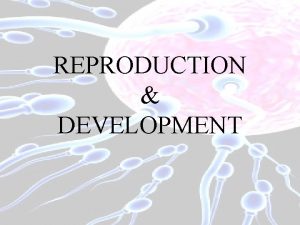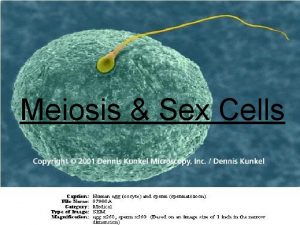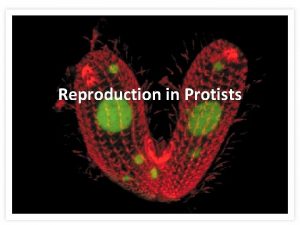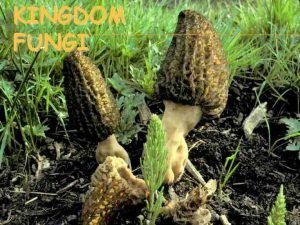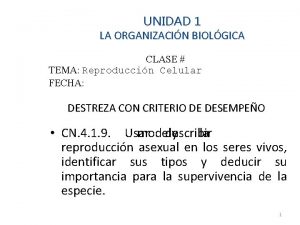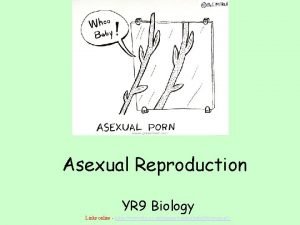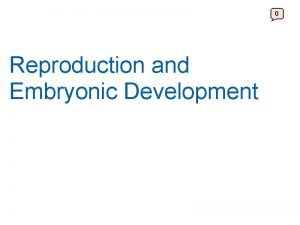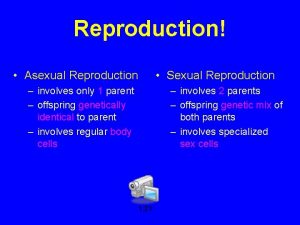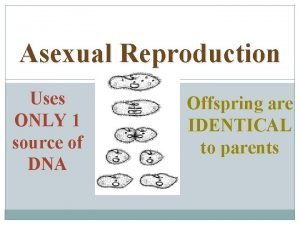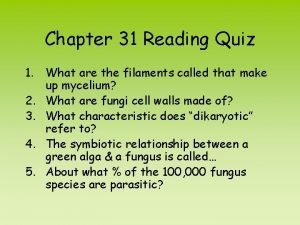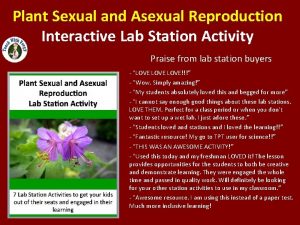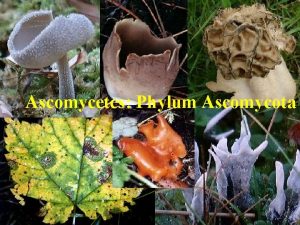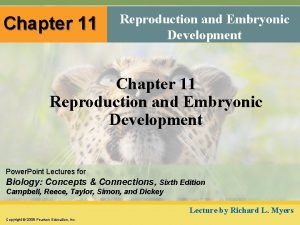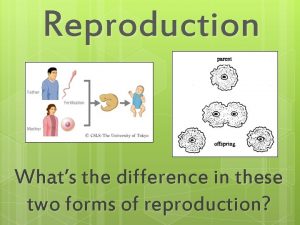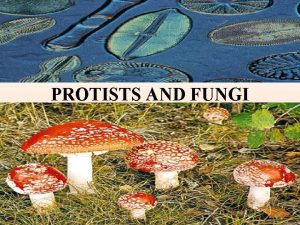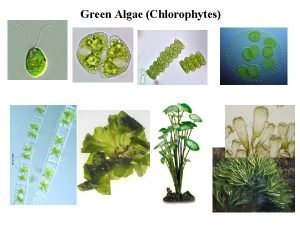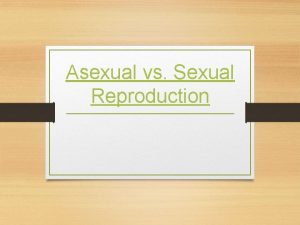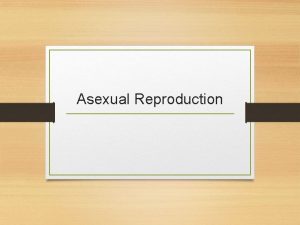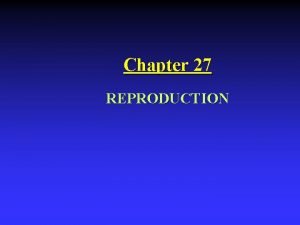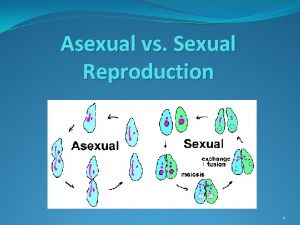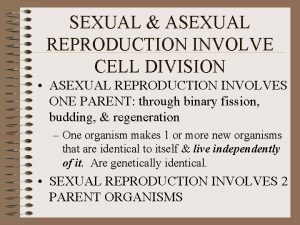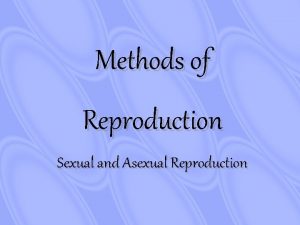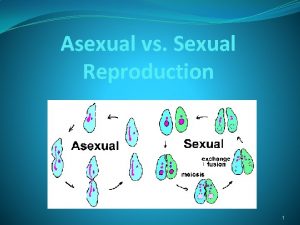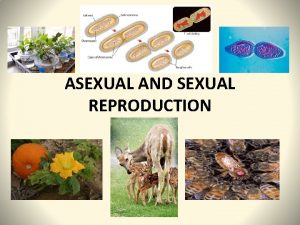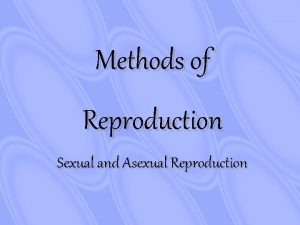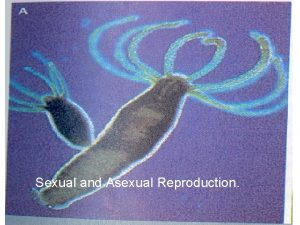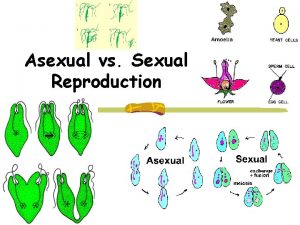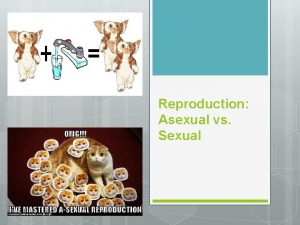Sexual vs Asexual Reproduction DO NOW Hwk on






































- Slides: 38

Sexual vs. Asexual Reproduction

DO NOW- Hwk on desk! 1. Which cell part is green, found only in plants and is the site of photosynthesis? n 2. Which cell part acts as the cleanup crew, recycling old cell parts? n 3. Which cell part is found in both animal and plant cells and produces the energy for the cell? n

Homework Please clear everything except your homework off of your desk n We will go over it together n It is your responsibility to make the corrections n

GOAL To compare forms of sexual and asexual reproduction n To understand the process of mitosis n

Sexual Reproduction n Sexual n 1. 2 parents Reproduction n 2. Sex cells: sperm and egg n 3. Sperm and egg join= fertilization n 4. Offspring look different from parent (mixed DNA)

Sexual Reproduction n Sexual n 5. Examples Reproduction – Humans, some plants, mammals, fish, reptiles, etc.

Sexual Reproduction

Asexual Reproduction n Asexual n 1. One parent Reproduction n 2. No sex cells n 3. Offspring produced by cell division n 4. Offspring identical to parent (same DNA) n 5. Several types in plants and animals

Types of Asexual Reproduction n Binary Fission n n 1. Organism divides in half 2. 2 identical daughter cells produced 3. Daughter cells are half the parent’s size 4. Daughter cells grow, then divide too 5. In bacteria

Types of Asexual Reproduction n Budding 1. Small bud grows out of parent cell n 2. Two different sized cells made (with identical DNA) n 3. Bud breaks off and grows n 4. In yeast and hydra n

Types of Asexual Reproduction n Regeneration n 1. Repair/ grow lost body parts n 2. Left over cells divide to make more cells n 3. Lobsters, starfish, lizards

What type of reproduction is this? ? ? Explain…

What type of reproduction is this? ? ? Explain…

What type of reproduction is this? ? ? Explain…

What type of reproduction is this? ? ? Explain…

What type of reproduction is this? ? ? Explain…

What type of reproduction is this? ? ? Explain…

What type of reproduction is this? ? ? Explain…

What type of reproduction is this? ? ? Explain…

What type of reproduction is this? ? ? Explain…

What type of reproduction is this? ? ? Explain…

What type of reproduction is this? ? ? Explain…

What type of reproduction is this? ? ? Explain…

What type of reproduction is this? ? ? Explain…

Asexual vs. Sexual

Mitosis n Mitosis 1. Cell division n 2. Causes multicellular organisms to grow (even in humans) n 3. Cells are identical to parent cells (same DNA) n

Mitosis n Phase 1 - Interphase – Chromosomes copied – Cell resting – Threadlike chromatin (DNA ball)

Mitosis n Phase 2 - Prophase – Mitosis begins – Chromosomes are rodlike pairs – Centrioles move to poles – Spindle fibers connect centrioles

Mitosis n Phase 3 Metaphase – Chromosomes attach to spindle fibers – They line up in middle of cell

Mitosis n Phase 4 - Anaphase – Sister chromatids pull apart – One sister of each pair goes to opposite ends of the cell

Mitosis n Phase 5 - Telophase – 2 new nuclei form – Chromosomes are in a ball again (chromatin)

Mitosis n Phase 6 Cytokinesis – Cytoplasm pinches in to form 2 new identical daughter cells

Which phase of mitosis is this? Explain…. .

Which phase of mitosis is this? Explain…. .

Which phase of mitosis is this? Explain…. .

Which phase of mitosis is this? Explain…. .

Which phase of mitosis is this? Explain…. .

Which phase of mitosis is this? Explain…. .
 Asexual vs sexual venn diagram
Asexual vs sexual venn diagram The disadvantages of sexual reproduction
The disadvantages of sexual reproduction Asexualk
Asexualk Disadvantage of sexual reproduction
Disadvantage of sexual reproduction Mitosis sexual reproduction
Mitosis sexual reproduction Venn diagram sexual and asexual
Venn diagram sexual and asexual Sexual or asexual reproduction
Sexual or asexual reproduction Two types of reproduction
Two types of reproduction Asexual and sexual reproduction difference
Asexual and sexual reproduction difference Are chickens asexual animals
Are chickens asexual animals Sexual or asexual reproduction
Sexual or asexual reproduction Reproduction
Reproduction Advantages of genetic diversity
Advantages of genetic diversity Parthenogenesis
Parthenogenesis Plural form of fungi
Plural form of fungi Asexual or sexual reproduction
Asexual or sexual reproduction Chromosomes in organisms
Chromosomes in organisms Example asexual reproduction
Example asexual reproduction Hwk leipzig
Hwk leipzig What is meiosis
What is meiosis Protist reproduction
Protist reproduction Basidiomycota characteristics
Basidiomycota characteristics Etapas de la reproducción humana
Etapas de la reproducción humana Runner plant examples
Runner plant examples Asexual reproduction
Asexual reproduction Chapter 19 asexual reproduction
Chapter 19 asexual reproduction Asexual reproduction involves
Asexual reproduction involves What phylum does squidward belong to
What phylum does squidward belong to Asexual reproduction
Asexual reproduction Chytridiomycota
Chytridiomycota Flatworm labeled
Flatworm labeled Asexual reproduction lab
Asexual reproduction lab Asexual reproduction
Asexual reproduction Ascomycete
Ascomycete Gastrula
Gastrula Whats reproduction
Whats reproduction Protists and fungi differences
Protists and fungi differences Ulothrix
Ulothrix Asexual reproduction involves *
Asexual reproduction involves *



